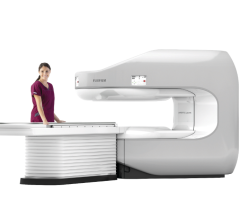
The 2016 annual meeting of the Radiological Society of North America (RSNA) show floor offered a plethora of picture archiving and communication system (PACS) vendors. But with so many vendors out there, how do you make the best decision on which system to choose? It is actually quite simple. Just consider the following guidelines when narrowing down your list. Here are 11 things you should consider when purchasing a PACS.
1. What do you like about your current system?
You’ve likely asked yourself and others within your group, “What features can we not live without?” Compile a list and rate them on a scale of most important to least important. Keep this list in mind when researching different PACS vendors, as there may be some items you could live without in exchange for the productivity and technology enhancements that may come with another vendor.
2. What do you dislike about your current system?
While I am sure you deal with complaints about your current system every day, engage your colleagues and put together a list. Turn their complaints into constructive feedback to help you choose the ideal PACS.
3. What are your annual support fees?
Many vendors have exorbitant annual support fees and some charge extra for software upgrades on top of it. Be wary of vendors with incredibly low fees because it could mean that they are unable to afford the support staff necessary to address your needs. Instead, look for vendors with reasonable fees that include help desk support, software updates (patches, etc.) and upgrades, including major version releases.
4. Is the PACS vendor neutral?
Does their PACS store DICOM images in a vendor neutral fashion that is easily retrievable? This is very important as you may change vendors again down the road, and you do not want to have migration headaches.
5. How long has the vendor been in business?
PACS is a very competitive market. Look for vendors that have been in business for at least 15 years and have good customer retention.
6. Does the vendor provide modality support?
Besides standard X-ray, ultrasound, magnetic resonance imaging (MRI) and computed tomography (CT), does the potential new vendor also include mammography that supports digital breast tomosynthesis, multiplanar reconstruction (MPR), positron emission tomography (PET)/CT fusion, etc.? Are these tools included with the system, or are they add-ons that come with additional fees and support costs? Look out for hidden fees.
7. Is their PACS easy to use?
It’s all about productivity, ease of navigation, minimal mouse clicks and fast turnaround times. Make sure you are getting the whole package.
8. Does the vendor offer scalability?
Whether you are a small imaging facility or a large enterprise radiology group, you must choose vendors with scalability. Some vendors offer solutions that cover various practice sizes. The champions not only offer a broad spectrum of solutions, but also provide easy upgrades, such as going from PACS to radiology information systems (RIS)/PACS with a license change and some training, technology for unified worklists and parallel PACS.
9. Does the vendor offer integration capabilities?
Maybe your electronic medical record (EMR) is keeping pace with industry trends and technological advancements, but your PACS has fallen short. Look for a PACS vendor that has strong interfacing capabilities. Who are the EMR vendors they currently interface with? Does the vendor have its own interface development team or is it outsourced? Outsourcing often doesn’t provide the quality control and speed-to-completion necessary for a smooth deployment and rich experience for end-users.
10. Is the PACS built with the latest technology?
The last thing you want to do is implement your new system on the same or similar platform as the old. Many things have changed since your previous PACS investment, especially in technology, database, redundancy, disaster recovery and cloud services. Design your new implementation structure to move in a progressive direction, capitalizing on the best and most current technology with an innovative company.
11. Is the vendor innovative?
Look for vendors that are innovative. What enhancements are going into their software updates? Are they simply me-too-type changes to keep up with other vendors, or are they truly offering progressive enhancements and staying ahead of the curve?
Al Kappel is the sales director for Ramsoft. He has more than 25 years of experience in IT, imaging informatics, sales and sales management.


 February 03, 2025
February 03, 2025 








